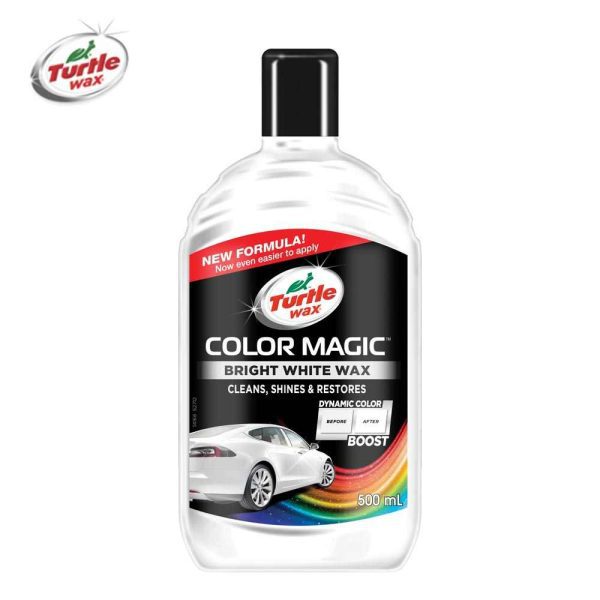
Paint decontamination - 5 steps to a car body that shines like a mirror
Content
Lacquer decontamination is a procedure in which minute contaminants such as tar, tar, flying rust, asphalt particles, insect residues or metal deposits from brake pads and discs are removed from the surface of the lacquer. Although they are often invisible to the naked eye, they negatively affect the appearance of the car body - make it dull and lose color depth. Disinfection of varnish should be carried out periodically, several times a year, and also before applying wax or varnish coatings. How to do it? Everything in our post!
What will you learn from this post?
- How to disinfect paintwork?
- What products are used to disinfect paintwork?
- Why is it worth disinfecting paint?
Shortly speaking
Decontamination of the varnish consists of five stages: primary rinsing, removal of mineral contaminants (tar and asphalt), removal of metal contaminants (dust from brake pads), clay coating and final wash. As a result, the car body acquires shine, gets dirty more slowly and is better protected from aggressive factors.
1. Preparation for paint disinfection: car wash.
Paint disinfection begins with a thorough washing of the car body. Auto detailers professionally engaged in complex auto cosmetics recommend that such a wash be carried out in two stages. The first one is preliminary cleaning of the body with active foam. This tool, thanks to a highly concentrated formula, softens impurities, preparing the varnish for further processing. Start applying active foam from the dirtiest places, i.e. from the thresholds and the bottom of the door, and gradually work your way up to the roof, then rinse in the same order. However, to perform this procedure, you will need the appropriate equipment − pressure washer with foam sprayer.
The second stage is the main wash. It is best to do them using the "two bucket" method.which reduces the risk of accidental scratching of the paintwork. If you have not pre-cleaned with active foam, start by rinsing the vehicle thoroughly. Then prepare two buckets. One of them fill with warm water and dilute car shampoo in the proportion indicated on the package.. In the second, pour only water - with it you will rinse the sponge or rag from dirt particles, which, when washed, can leave microdamages on the paintwork.
Wash the car from top to bottom in a circular motion., they gradually move from the roof to the sills and bumpers. Finally, rinse off any remaining detergent with a strong stream of clean water and dry the body with a soft microfiber towel.

2. Removal of tar and asphalt.
The second stage of paint disinfection includes: removal of mineral impurities - the remains of tar and asphalt, which most often accumulate on the trunk and the bottom of the door. This kind of dirt is used for cleaning measures called tar removers. Their use is simple - just spray on a part of the car body, wait until the active ingredients dissolve the dirt, then wipe the surface with a soft cloth and rinse off the remaining drug with water. Tar removers, especially based on citrus oils, They are also great for removing glue residues.eg after window stickers or vignettes.
3. Removal of metallic dirt.
The next stage of disinfection of paint - fight against extremely hard-to-remove metal contaminants - dust from brake pads and brake discswhich settles on the edges and bottom of the door. Contamination of this type not only looks ugly, but can also accelerate the corrosion process, so it is worth getting rid of them regularly. They are used for this deionizing drugs... In common parlance, they are called "bloody" due to contact with metallic dirt. the liquid changes color to blood red. Deironizers are used in the same way as tar and asphalt removers - you spray the dirty surface, wait, and then rinse.

4. Claying of varnish.
The fourth stage of paint disinfection is clay, i.e. mechanical removal of dirt not treated with chemicals. Often impurities are so deeply embedded in the varnish that they cannot be seen with the naked eye - only when we touch it with our hand can we feel its obviously rough surface. Clay allows you to smooth it, which means it makes the body regains its shine and color depth.
This processing is carried out using lacquer clay, the structure of which resembles plasticine - warming up in your hands, you can freely shape it. The whole procedure is described in detail in the text How to apply a coating?
5. Final car wash.
Finally, you must wash the car againremove the remaining clay and then dry the car body with a soft towel. It is best not to let the car dry spontaneously in the sun, as this leads to unsightly spots, so-called water spots. And it's done - Successful paint decontamination.

Why is it worth disinfecting paint?
Disinfection of the paintwork is the only way to remove all contaminants from the surface of the car body, even the most persistent ones. It takes time and patience, but the effect is worth the effort - thanks to him the body regains its luster and the value of the car is automatically increased. If you're planning to sell your car, this is a good idea - chances are it'll be easier for you to find a buyer (and maybe make a little more on the deal!). Lacquer disinfection is also carried out. indispensable when you plan to wax or polish your paint.
The resources you need to decontaminate your varnish (and much, much more!) Can be found at avtotachki.com.
